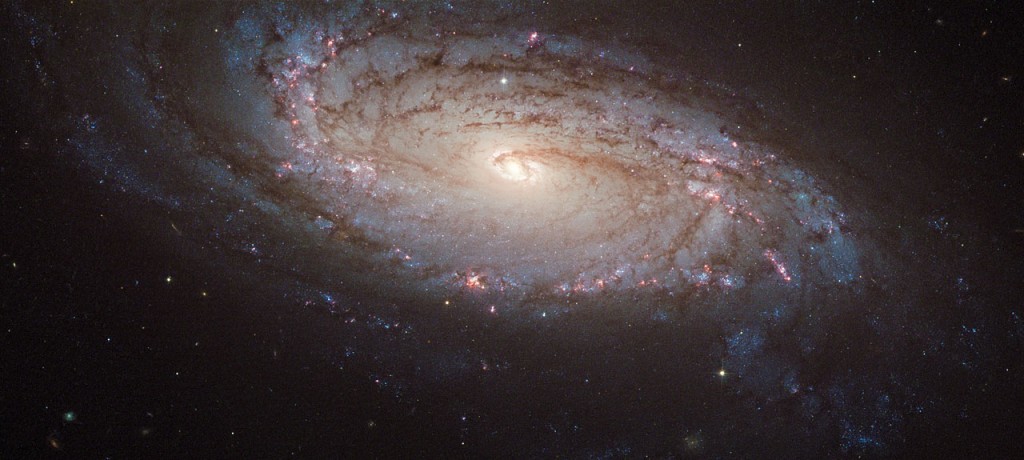We've been featuring a lot of space-based photo news lately, and for good reason. Since the Curiosity's landing on Mars, there has been a renewed interest in life beyond Earth. That, and NASA has been rockin' it with some seriously cool stuff. Like this, a photo captured by the Hubble Space Telescope of a supernova exploding 80 million lightyears away.
"A new image from the NASA/ESA Hubble Space Telescope shows NGC 5806, a spiral galaxy in the constellation Virgo (the Virgin). It lies around 80 million light years from Earth. Also visible in this image is a supernova explosion called SN 2004dg.
The exposures that are combined into this image were carried out in early 2005 in order to help pinpoint the location of the supernova, which exploded in 2004. The afterglow from this outburst of light, caused by a giant star exploding at the end of its life, can be seen as a faint yellowish dot near the bottom of the galaxy."

"This image is produced from three exposures in visible and infrared light, observed by Hubble’s Advanced Camera for Surveys. The field of view is approximately 3.3 by 1.7 arcminutes."
Now c'mon. That's pretty awesome.






Well, the supernova did not happen in 2004. . . the star 'exploded' millions of light years ago(depending how many light years the galaxy/star is etc, and the light has only just recently reached our part of the universe.
I love light and space, mainly because you need light to capture things, even if it is 80million light years away. Do you think anyone could do the math you would have to set your camera too to capture light travailing from 80 million miles away? (lol)
Jimmy there are no special settings for your camera. Just use your shutter and aperture depending on the intensity of light. if you really wanted to capture light that left today, you just have to wait (or have a self timer) 80 million years that's all.
Here's a geeky fact: We're lucky it's so far away. A supernova within 30 light years could kill all life on Earth!
http://imagine.gsfc.nasa.gov/docs/ask_astro/answers/980521a.html
Thankfully, there are no stars in that range that are currently capable of going supernova.
True and that's why we have survived for this long. That is also why some people find it hard to believe that life can survive enough to become interstellar travellers etc..